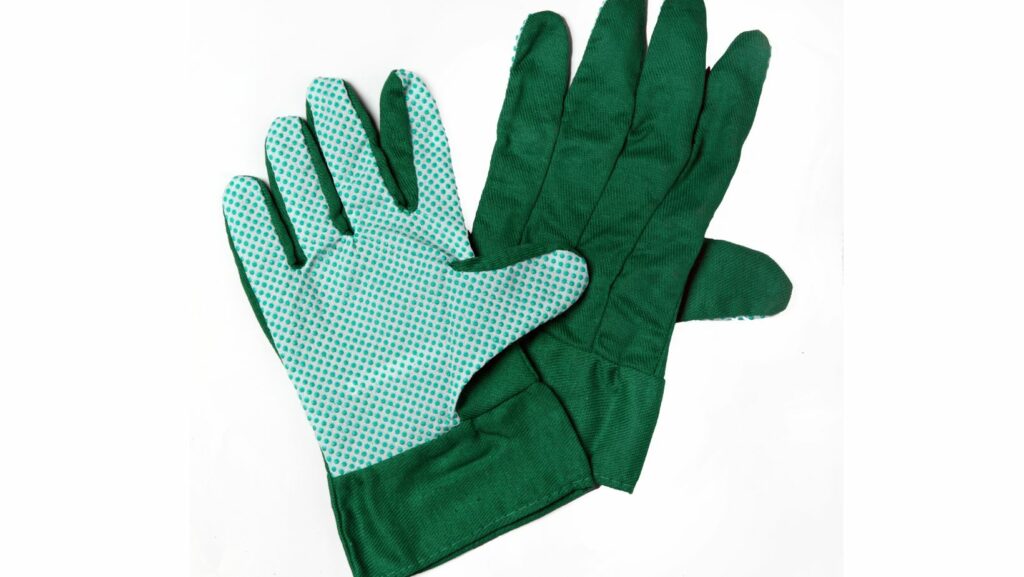The humble gardening glove: a staple for any green thumb. But have you ever considered the impact of your gloves on the environment? Enter the world of green gardening gloves. They’re not just a color, they’re a commitment to sustainable gardening practices.
Green Gardening Gloves
 Diving deeper into the domain of green gardening gloves, one finds an exciting range of products. Each glove, made from sustainable materials such as bamboo fibers, organic cotton, or recycled plastics, represents a commitment to Earth-friendly practices. They’re equally durable, offering longevity equal to or better than products made from traditional, non-green materials.
Diving deeper into the domain of green gardening gloves, one finds an exciting range of products. Each glove, made from sustainable materials such as bamboo fibers, organic cotton, or recycled plastics, represents a commitment to Earth-friendly practices. They’re equally durable, offering longevity equal to or better than products made from traditional, non-green materials.
Furthermore, these gloves exceed expectations not just in durability, but in comfort too. Designers carefully engineer them to provide excellent grip, breathability, and flexibility. For gardeners, such features translate into hours of tireless work in the garden, all while embodying sustainable living.
Moreover, switching to green gardening gloves isn’t a compromise, it’s an upgrade. Irrespective of the gardening task at hand, whether it’s repotting plants or weeding, these gloves hold their own. Besides, by choosing them, gardeners support an industry pushing for environmentally conscious practices.
Factors to Consider When Buying Green Gardening Gloves
 When selecting green gardening gloves, consider factors such as material, comfort, fit, function, and price. First, affirm the material’s eco-friendliness, supporting sustainable materials like bamboo fibers, organic cotton, or recycled plastics. Not only do these materials boost your eco-friendly practices, they also offer durability and flexibility.
When selecting green gardening gloves, consider factors such as material, comfort, fit, function, and price. First, affirm the material’s eco-friendliness, supporting sustainable materials like bamboo fibers, organic cotton, or recycled plastics. Not only do these materials boost your eco-friendly practices, they also offer durability and flexibility.
Secondly, seek comfort. Gardening gloves, regardless of their green credentials, lose their value if they cause discomfort. Look for features like breathability and good insulation, keeping hands both cool and protected.
Next, prioritize the fit. Ill-fitting gloves restrict movement, impede garden work efficiency, and may cause blisters. Choose gloves that offer a snug fit, allowing for manual dexterity without sacrificing protection.
Fourth, keep in mind the function. Depending on garden tasks, requirements vary. For detailed work like pruning, thin fabric gloves might be ideal, while heavier tasks may call for sturdier gloves with reinforced palms and fingertips.
Green Gardening Gloves: A Comparative Review
 This section offers an insightful comparative review between popular green gardening gloves on the market. The first aspect evaluated is the gloves’ eco-friendliness. Gloves made from bamboo fibers excel in this regard, being composed of a renewable resource. Organic cotton gloves aren’t far behind, also standing as an environmentally sustainable choice. Recycled plastic gloves make a commendable effort, transforming potentially wasteful material into a beneficial tool.
This section offers an insightful comparative review between popular green gardening gloves on the market. The first aspect evaluated is the gloves’ eco-friendliness. Gloves made from bamboo fibers excel in this regard, being composed of a renewable resource. Organic cotton gloves aren’t far behind, also standing as an environmentally sustainable choice. Recycled plastic gloves make a commendable effort, transforming potentially wasteful material into a beneficial tool.
Comfort is another criterion where bamboo gloves shine. Their soft and flexible construction makes them a preferred choice for many gardeners. Organic cotton gloves are renowned for their breathability, reducing hand sweat even during hot summer days. Contrarily, recycled plastic gloves may lack the same level of comfort, primarily if not lined with an additional soft layer.
Finally, in terms of price, recycled plastic gloves typically come out on top as the most affordable option, followed by organic cotton and then bamboo. Although bamboo gloves generally cost a bit more, their superior comfort and eco-friendly nature makes them a justifiable purchase, offering both a practical, comfortable solution for gardening tasks and supporting environmental sustainability.
Maintenance and Care for Green Gardening Gloves
Maintaining green gardening gloves enhances their lifespan, thus escalating the sustainable impact. Wash bamboo gloves by hand, using lukewarm water and mild detergent. Avoid wringing them out; instead, roll them gently in a towel to absorb excess moisture. For air drying, spread them out flat, away from direct sunlight that might weaken the fibers.
Organic cotton gloves can accommodate machine washing, but they retain their shape better with handwash. Similar to bamboo gloves, they thrive best when air dried. For gloves made from recycled plastic, rinse them under cold water after each use. In sturdy dirt situations, use a scrubbing brush and natural, biodegradable soap.
Use individual storage bags for each pair to prevent damage from snagging or color bleed. Regularly inspect them for wear and tear. Taking care of green gardening gloves not only extends their longevity but underscores the commitment to sustainable living.

